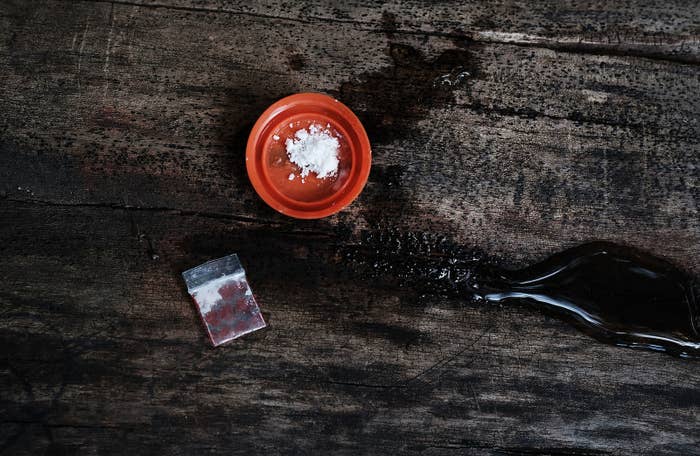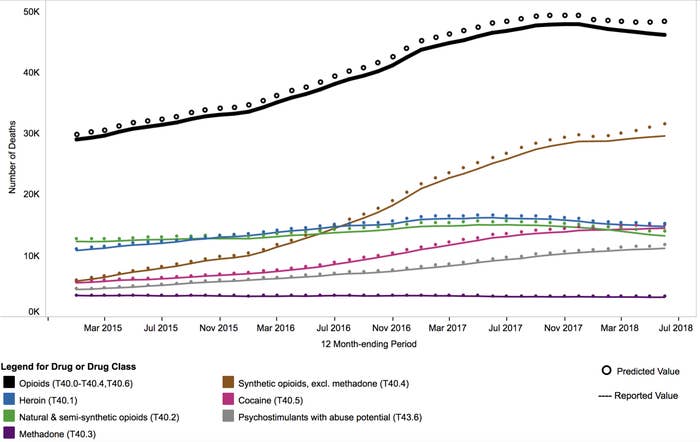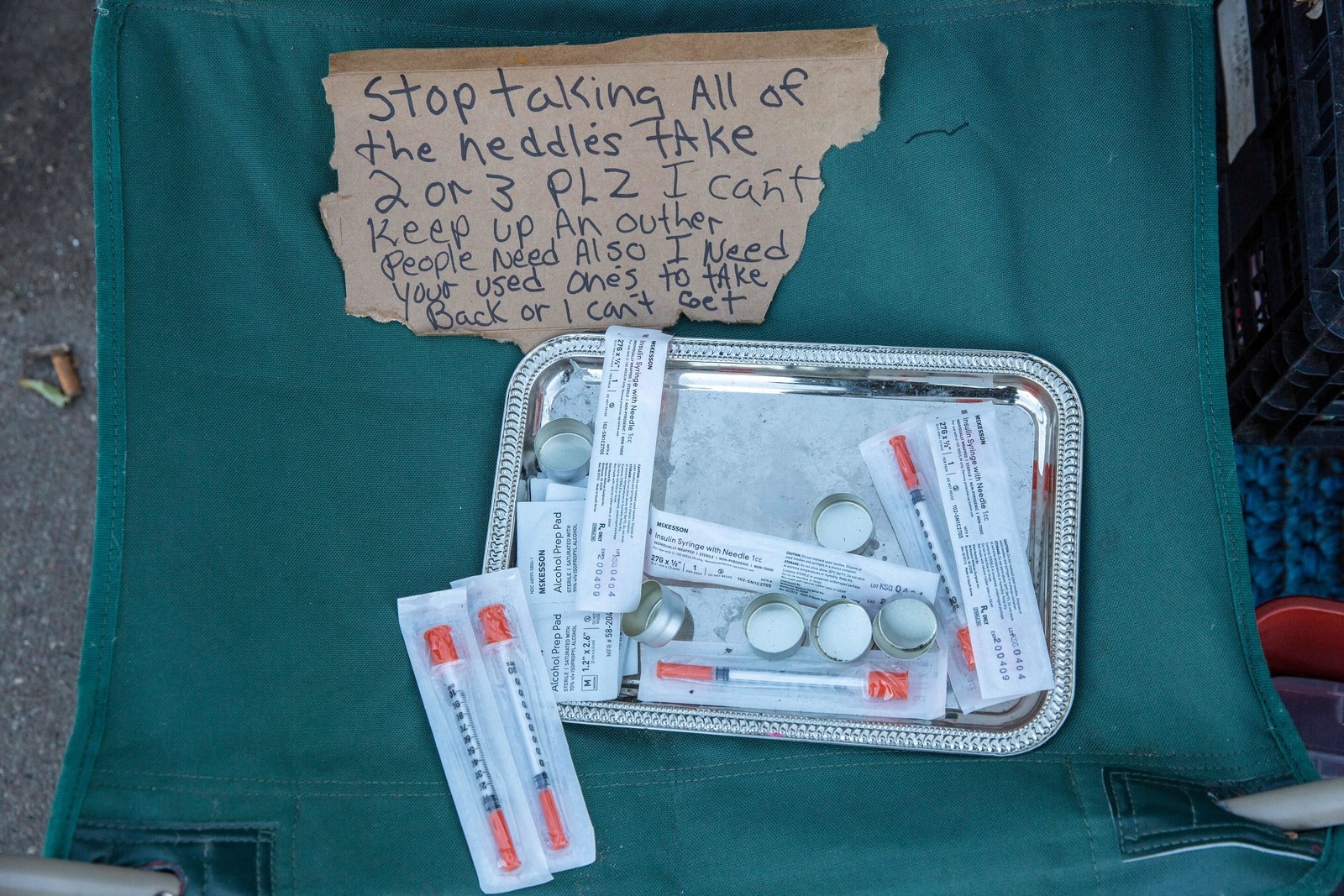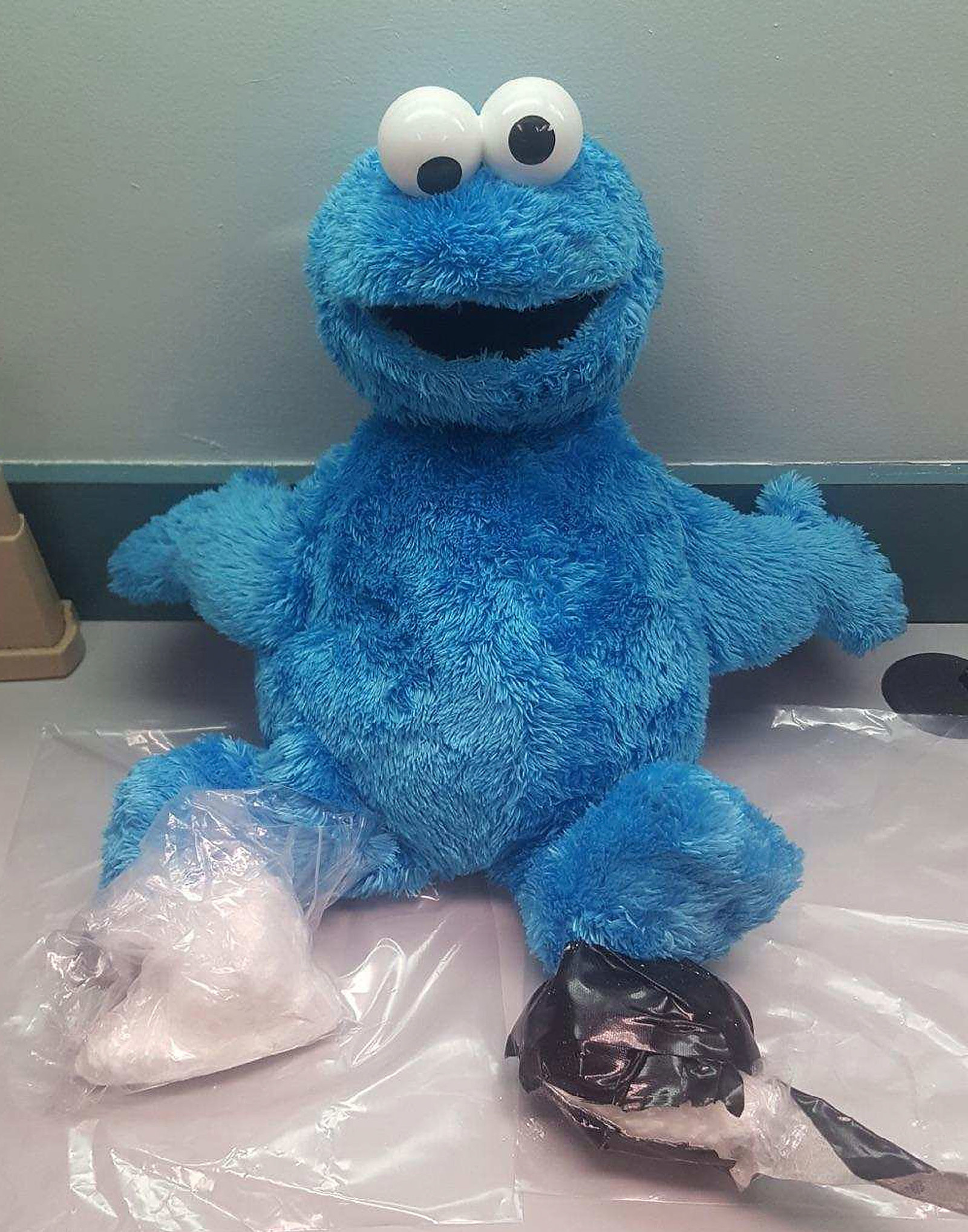
Cocaine overdoses, killing about 15,000 people a year, now exceed those from opioid painkiller pills, according to US death certificate data. Methamphetamine deaths are surging just behind them, now estimated at around 11,000 annually.
The increase in fatal stimulant drug overdoses marks what experts are calling a “fourth wave” in the decadeslong US overdose crisis.
“It’s not your father’s drug market anymore,” former CDC epidemiologist Jon Zibbell of RTI International in Research Triangle Park in North Carolina told BuzzFeed News. “What we are really seeing is people now using multiple drugs, and stronger synthetic drugs of all kinds.”
More than 70,000 people a year die of drug overdoses in the US, far more than are killed by car crashes, guns, or AIDS at the height of the crisis in the 1990s. The staggering number of deaths is the culmination of an epidemic that started two decades ago with opioid painkillers, followed by heroin a decade later. More recently, the epidemic has been fueled by the potent synthetic opioid fentanyl. Fentanyl and its variants remain the leading cause of drug overdose deaths nationwide, killing about 30,000 people yearly, followed by heroin, which kills more than 15,000.
But cocaine and methamphetamine, both stimulants, are catching up to heroin and other opioids as causes of death in provisional CDC statistics, growing by roughly 250% since the start of 2015. Mixed with other drugs, or taken alone in more potent forms, they will likely worsen the already terrible US overdose epidemic, a national public health emergency that until now has been driven by opioids.

A December report from the National Drug Early Warning System (NDEWS), for example, reported increases in drug overdose deaths with both fentanyl and cocaine present in Philadelphia, New York, and the state of Maine, compared to 2017. In Huntington, West Virginia, “fentanyl and methamphetamine are now the most commonly co-occurring drugs found in overdose death cases,” Michael Kilkenny, physician director at the Cabell-Huntington Health Department, told BuzzFeed News.
Public health officials in Rhode Island have warned of fentanyl contaminating cocaine, a danger to cocaine users who are not habituated to opioid use, and in West Philadelphia last June, 18 people overdosed and three died after smoking crack cocaine they didn’t know was laced with fentanyl. A BuzzFeed News analysis last May found that fentanyl tainted cocaine through much of the Eastern Seaboard. In at least eight states — notably New Hampshire, Massachusetts, and Maine — the majority of cocaine deaths involved fentanyl.
Of particular concern are warnings about cocaine spiked with carfentanil, a variant of fentanyl some 100 times stronger, which was first reported in Florida by the Drug Enforcement Administration in 2017. A report released Monday by Harm Reduction Ohio suggests that cocaine in that state is being spiked with fentanyl on the local level, by small-scale dealers. Scientific analyses of police seizures found large quantities of cocaine uncontaminated, whereas small-scale seizures turned up with fentanyl 14.1% of the time. (On the plus side, that Ohio data suggests such adulteration is decreasing, with carfentanil no longer showing up in cocaine there.)
“It is worth warning people at nightclubs who might use cocaine recreationally about the possibility of fentanyl contamination,” opioids program manager Kendra Viner of the Philadelphia Department of Public Health told BuzzFeed News. But overall, only about 2% of seized cocaine vials in Philadelphia are contaminated by fentanyl.

Most experts instead suggest coroners are seeing people who knowingly use both kinds of drugs. In Philadelphia, Viner said the demographics of people who fatally overdose with both fentanyl and cocaine in their bloodstream, along with needles and other signs of injection drug use, points to “speedballing” — injecting a combination of the two drugs. Others might use different drugs during the day.
“What we sometimes hear is, ‘I use speed in the morning to get going and heroin to come down later,’” medical epidemiologist Dan Ciccarone of the University of California, San Francisco, told BuzzFeed News.
Behind the stimulant wave is a burgeoning supply, spurred by record coca crops in Colombia (the source of most US cocaine) and a switch in methamphetamine production from kitchen table chemists in the US to professional traffickers in Mexico.
“Through the first half of fiscal year 2018, methamphetamine and cocaine seizures by U.S. Customs and Border Protection are almost equal to all the 2017 seizures,” said a recent NDEWS report from Texas. Methamphetamines are now made from industrial chemical precursors, not cold medicine, according to the report, “and major drug seizures of large quantities imported from Mexico are more commonly reported.”
According to Zibbell, the former CDC epidemiologist, meth from Mexico — “more powerful, potent, and pure” — has overtaken the weaker varieties cooked up domestically by amateurs, leading to more overdoses while expanding the supply. And that surge has fed the fourth wave of the crisis.
“With illegal drugs, supply creates demand,” he said. “The illegal drug market is not a free market. The consumers actually have very little choice. They buy what the dealers have. And sometimes the dealers themselves don’t really know what they have.”

Another sign of the stimulant wave is reports of drug users increasingly injecting meth with heroin, so-called goofballs, in Seattle. Similar to speedballers in Philadelphia who inject fentanyl and cocaine, the report from Seattle suggests these users are younger than other users. On the West Coast, where the heroin is mostly the sticky black tar variety, fentanyl adulteration of heroin is rarer. In San Francisco and Los Angeles, for example, 15% or less of cocaine, methamphetamine, and heroin deaths also involved fentanyl, whereas in Detroit and Philadelphia, fentanyl was present 60% or more of the time, according to NDEWS.
“We need to start testing drugs and giving people warnings about fentanyl and carfentanil — in real time,” Ciccarone said, whether it taints heroin, cocaine, or meth. The CDC last week warned doctors about botulism in black tar heroin in San Diego, for example. Carfentanil, meanwhile, was linked to nearly 400 deaths in Ohio and more than 500 in Florida in 2016.
“If we can do that for botulism or romaine lettuce, why can’t we do that for carfentanil?” he asked. “My god, if we can’t warn them about carfentanil, what can we warn them about?”
